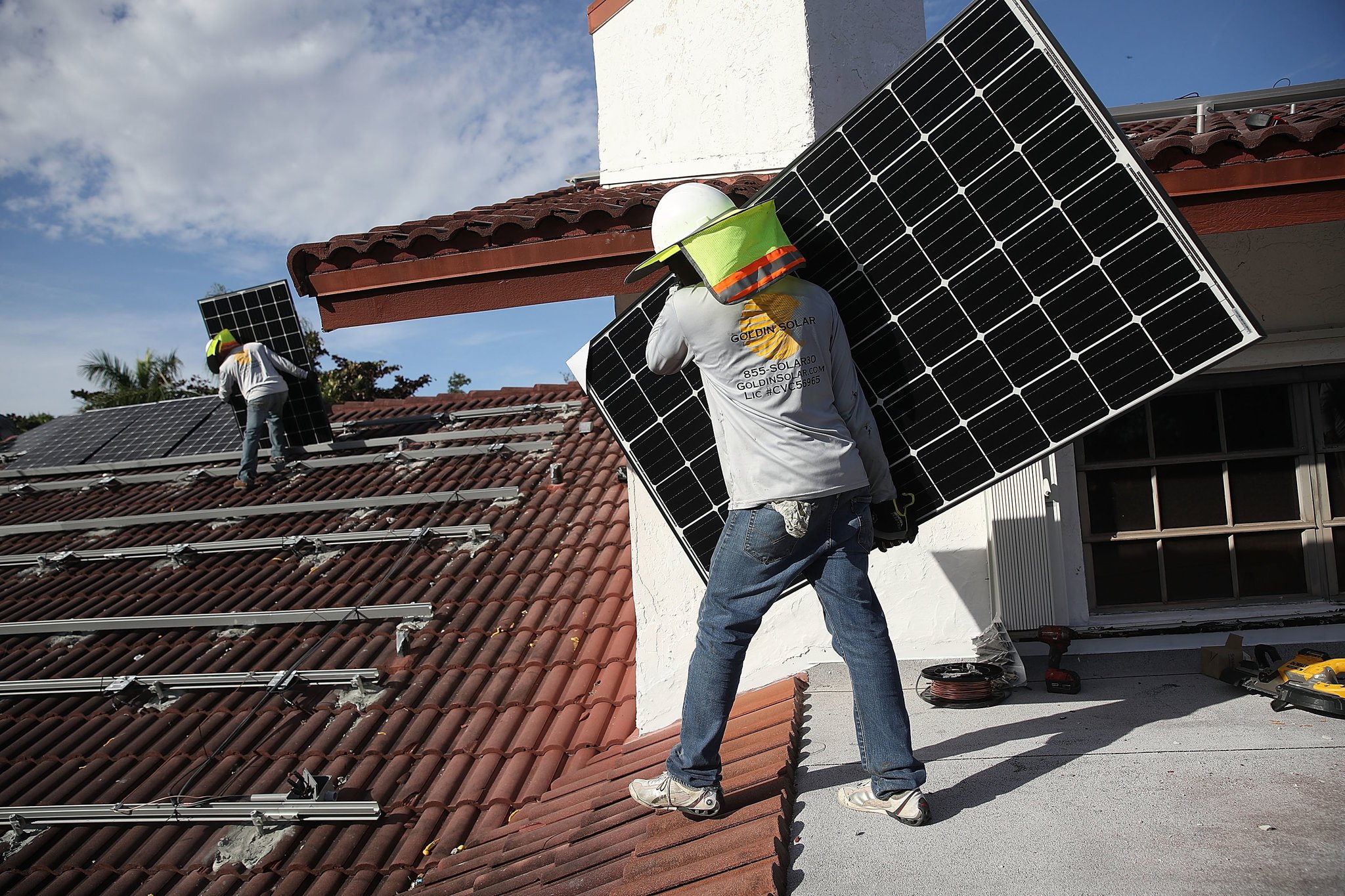
What’s more, she contends that embracing clean energy affirms the populist beliefs the Tea Party espouses. The monopoly control of utilities over energy supplies stands in contrast to the free market, she said, while solar and wind power represent energy freedom.

Credit
Joe Raedle/Getty Images
Over the last five years, she has unabashedly linked arms with environmental groups championed by the left, like the Sierra Club. And on Thursday, she is set to appear at an event in San Francisco with a member of the Democratic National Committee’s executive committee — Christine Pelosi, daughter of Representative Nancy Pelosi, the House minority leader vilified by the right.
“You can have success if you have environmentalists look at saving the environment as an ethic, and evangelicals as saving God’s creation,” Christine Pelosi said. “You don’t have to agree on everything.”
While Ms. Dooley’s efforts are still an anomaly in conservative circles, she has formed a group called the Green Tea Coalition to rally more conservatives around renewable energy.
“Debbie is being a little bit of a trailblazer on the climate issue, but she was always a trailblazer on clean energy,” said Stephen Smith, executive director of the Southern Alliance for Clean Energy, an environmental advocacy group based in Knoxville, Tenn.
Ms. Dooley sees the Trump administration’s tariffs on solar-panel imports as the latest in a series of impediments to clean energy. A former information technology systems analyst — “probably why I am so drawn to innovative energy technology” — she is particularly critical of policies that make it more difficult for consumers to become more self-reliant for their energy.
At 59, from her rental home here in the Atlanta suburbs, she works full time on utility, clean energy and climate issues with a total budget of $90,000 a year, using funds from the San Francisco-based Energy Foundation and other donors. She has worked to persuade legislators and regulators in her state to embrace measures that would foster greater use of solar power.
But it wasn’t easy. “I didn’t just put my head in the sand like an ostrich,” Ms. Dooley said. “Let’s face it: They had to come kicking and screaming.”
She is also having a wider impact, taking on some of the nation’s largest utilities.
Proponents of residential solar power like Ms. Dooley accuse utility companies and the energy industry at large of waging war on efforts to free consumers from their power companies, even if only for a slightly lower electric bill.
For the utilities, which are facing flat or declining consumption, residential solar power threatens the bottom line. They have responded by spending tens of millions of dollars to combat consumers’ efforts to untether themselves from the electric grid.
A new study by the Sustainable Investments Institute, a nonprofit group that conducts research on efforts to influence corporate boards, found that utilities had spent $50 million between 2011 and 2016 to block clean energy in seven states: Alaska, California, Florida, Michigan, Ohio, Oregon and Washington.
Despite calling itself the Sunshine State, Florida lags behind such states as New York and New Jersey in residential solar installations. But a 2016 campaign resulted in overwhelming voter approval of a constitutional amendment to provide a property tax exemption for solar installations. In a referendum months later, voters rejected a utility-backed measure, presented as pro-solar, that would have actually allowed new fees on home solar users.
Different Directions on Solar Energy
Republican-leaning states lag in residential solar capacity, though some of those states are among the leaders in large solar-power projects by utility companies.

Cumulative installed solar photovoltaic capacity by state
STATE WON BY TRUMP IN 2016
Through third quarter of 2017, in gigawatts
WON BY CLINTON
TOP 10 STATES, BY
RESIDENTIAL SOLAR CAPACITY
TOP 10 STATES, BY
UTILITY-SCALE SOLAR CAPACITY
California
California
North Carolina
New Jersey
Massachusetts
New Mexico
Connecticut

Cumulative installed solar photovoltaic
capacity by state
Through third quarter of 2017, in gigawatts
STATE WON BY TRUMP IN 2016
WON BY CLINTON
TOP 10 STATES, BY
RESIDENTIAL SOLAR CAPACITY
California
New Jersey
Massachusetts
Connecticut
TOP 10 STATES, BY
UTILITY-SCALE SOLAR CAPACITY
California
North Carolina
New Mexico
Florida Power & Light and Duke Energy spent a combined $14.8 million on the referendum campaign. Ms. Dooley worked to counter their efforts, standing with environmentalists and business groups and helping win support from the Christian Coalition and self-identified libertarians. .
Her side prevailed. And aided by the property-tax break and lower solar-panel prices, Florida more than doubled the number of residential solar projects in 2016 compared with the previous year, according to the Southern Alliance for Clean Energy.
Clean-energy proponents are determined to build on such successes. According to research by the University of California, Irvine, the California Institute of Technology and the Carnegie Institution for Science, 80 percent of the nation’s power needs can be met by solar and wind.
Although she backed the Florida tax break, Ms. Dooley said she was convinced that alternative energy sources could hold their own without government intervention. “I think solar and wind have progressed to the point that they don’t need subsidies,” she said. “The government shouldn’t pick winners and losers.”
That conservative shading to her argument might appeal to Republicans. Still, red states — particularly in the South — have been resistant to residential solar power, a review of data from the solar industry organization has found. If they support solar power at all, their utilities tend to want to produce it themselves.
Of the 10 states with the most residential solar power, eight voted for Hillary Clinton in 2016. Of the 10 with the most solar capacity at utility scale, six voted for Mr. Trump.
Randy Wheeless, a spokesman for Duke Energy, insists that utilities are embracing cleaner technologies, noting that a decision by the company to forgo building a nuclear plant in Florida included plans for new solar farms. He said Duke was one of the few utilities in the country to file comments opposing the solar-panel tariff.
Mr. Wheeless also said Duke had recently been adding 300 residential solar customers in Florida each month.
But Lauren McDonald Jr., a member of the Georgia Public Service Commission who led efforts to bring more solar to his state, said the utilities simply didn’t want to depart from the business model they had operated under for a century, despite the changing world of energy.
“Their business is to generate electricity, transport it and to sell it,” Mr. McDonald said. “Anything that might come into play that might derail that agenda, they don’t give up easily.”
Neither, it seems, does Ms. Dooley.
When she talks about clean energy and climate change, she clutches her cellphone and pulls up a picture of her grandson, Ayden Sides.
“I fully believe we should be good stewards of what God gave us,” Ms. Dooley said.
Continue reading the main story
Powered by WPeMatico

